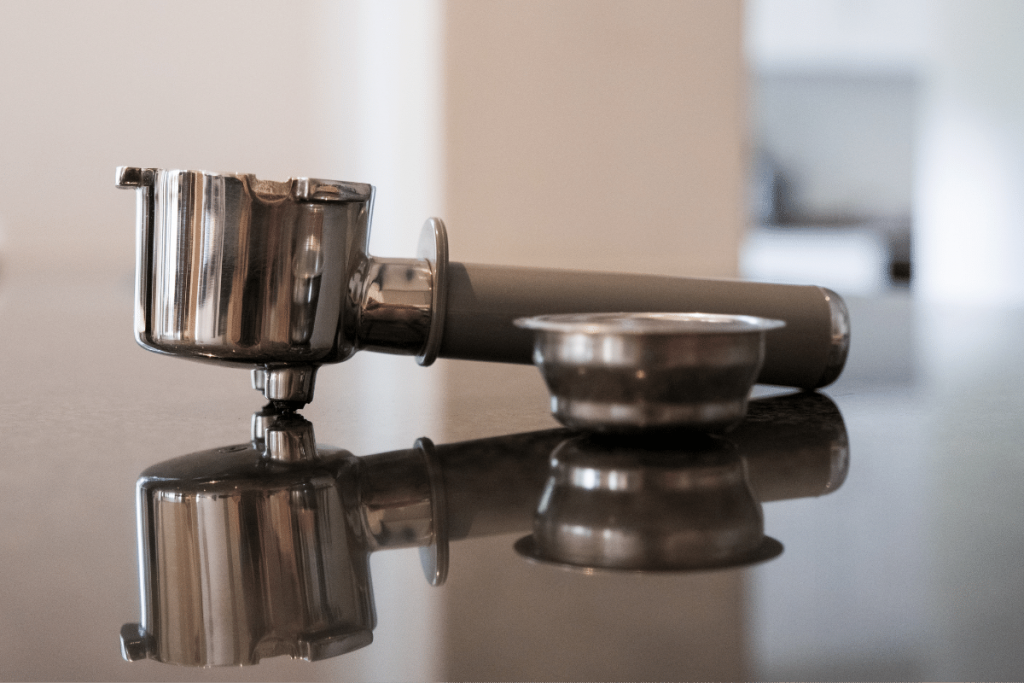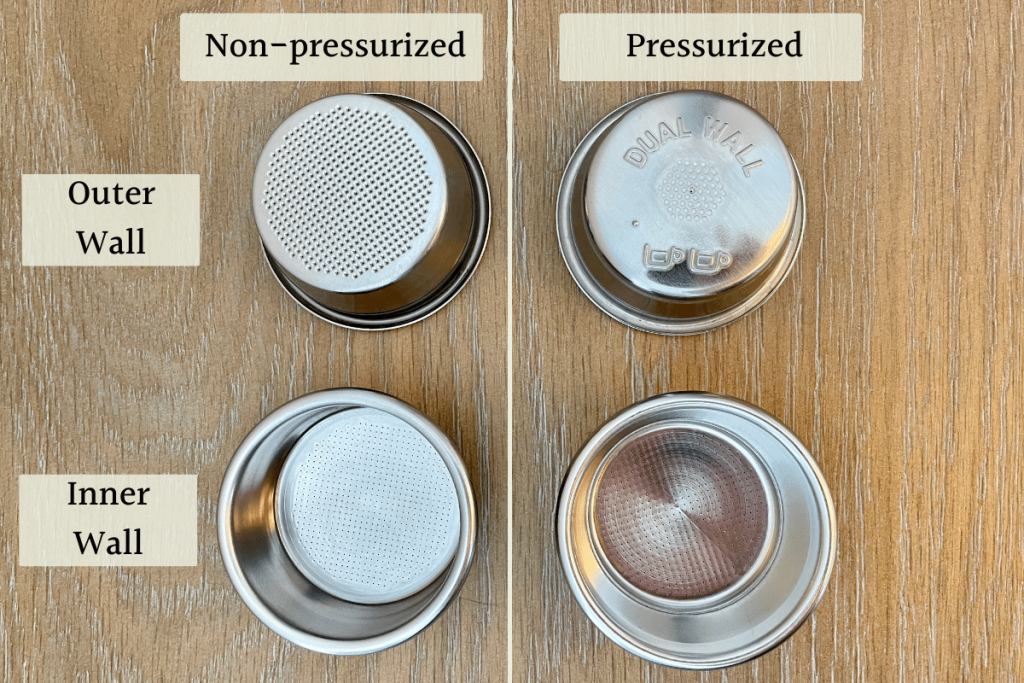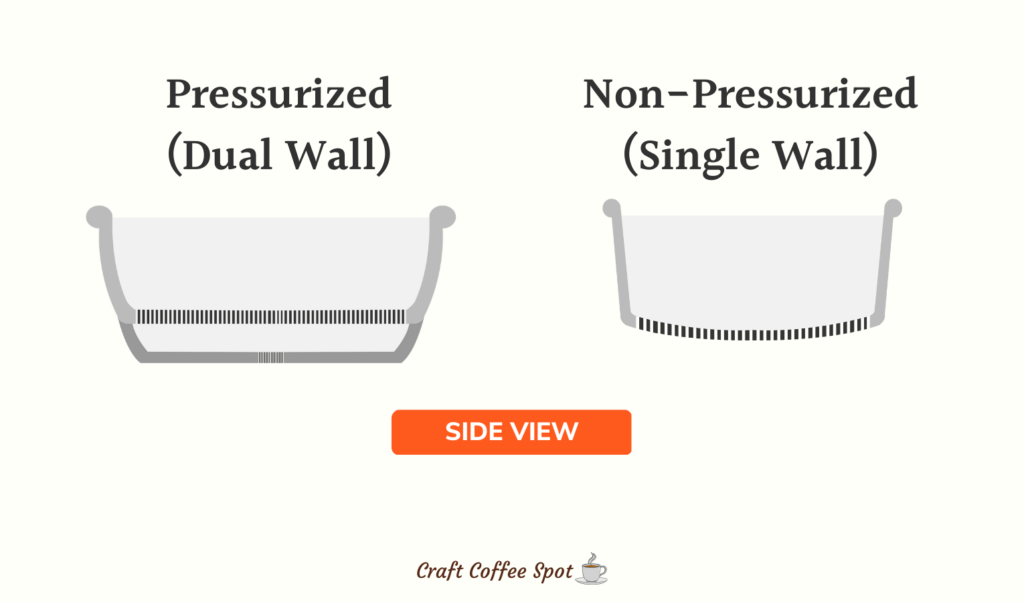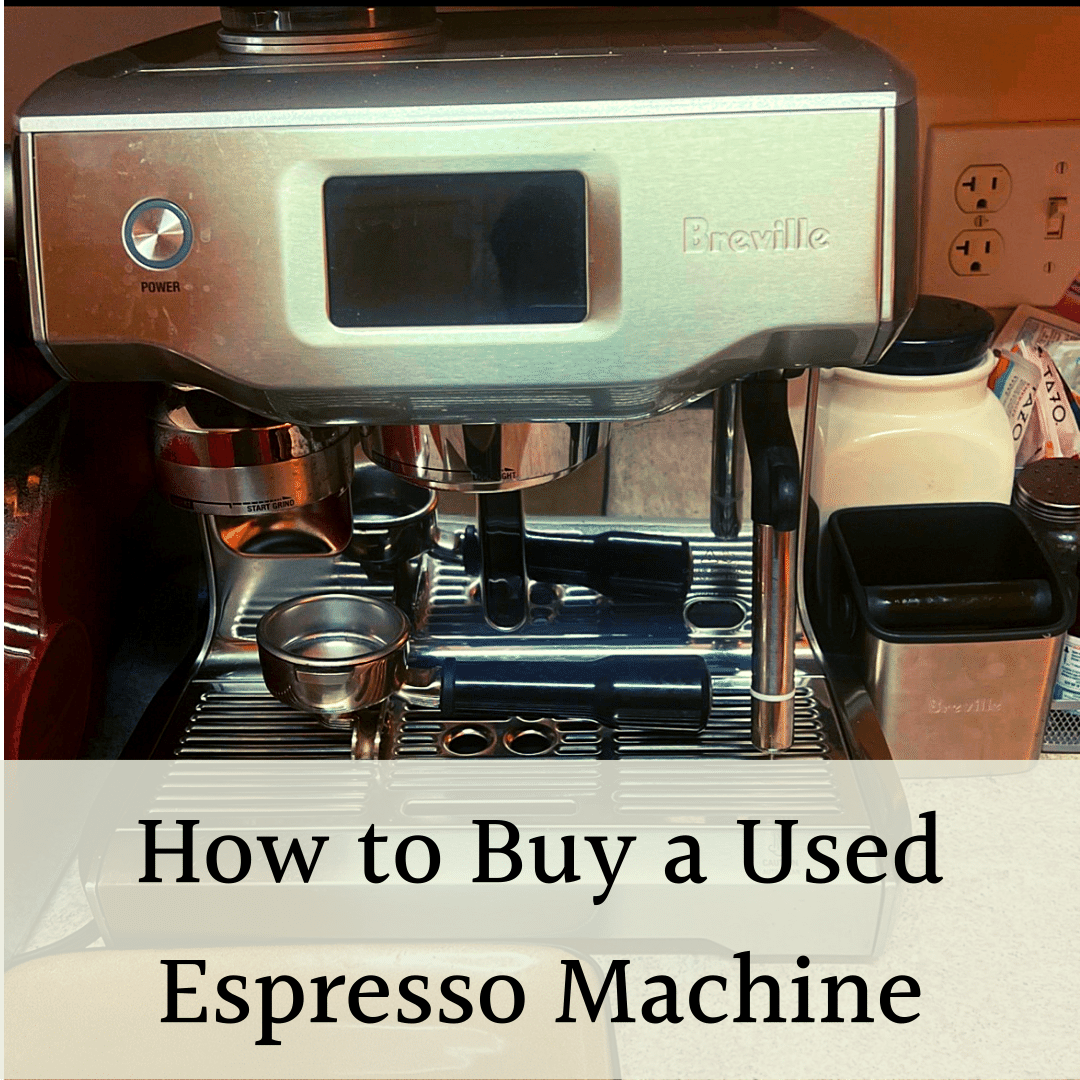If you’ve been learning the art of pulling a flavorful espresso shot, you probably know the grinder and fresh coffee beans are among the most crucial components. But, portafilter baskets are extremely important as well. In fact, these baskets will determine a lot of the flavor and the coffee grounds you can use.
To simplify the difference between the two baskets: pressurized baskets are for beginner baristas, because the design allows you to use coarse grounds or low-pressure machines. Non-pressurized baskets will deliver better flavor as you can grind finer for better extraction, but there’s a high learning curve.
I’ll go over all the crucial differences between pressurized vs non-pressurized baskets and give you a selection of filter basket options for a delicious espresso.
Understanding the Portafilter and Filter Basket

The portafilter has two parts: a handle and a filter basket holder (the handle is attached to the basket holder). You place the filter basket in the portafilter, fill it with ground coffee, and attach the portafilter to the brew head. Filter baskets can be placed in and out of the portafilter as needed for cleaning and putting in coffee.
A filter basket is usually made of metal. It holds the coffee grounds while pressurized water goes through them. The bottom has one or more holes where extracted coffee can come out into your cup.
Differences Between Pressurized and Non-Pressurized Filter Baskets
The two major types of filter baskets are pressurized and non-pressurized. A set of each comes with most espresso machines. You can identify the filter baskets by looking at them.
Pressurized portafilters have one small hole in the bottom and use the tiny hole to build pressure to push espresso through. The non-pressurized baskets have small holes on both sides.

To break this down into more detail.
A pressurized basket:
- Has two walls. The inner wall has many holes, while the external wall has one tiny hole.
- The space between the two walls builds pressure inside the basket, so there’s a consistent extraction.
- Extra pressure can make up for inconsistencies in the grind size or weak pressure on the espresso machine.
- Best used with coarser grounds.
- Beginner-friendly.
A non-pressurized basket:
- Only has one wall, with many holes.
- The coffee puck builds pressure for consistent extraction.
- Since only the coffee grounds build pressure, making good espresso requires good puck preparation.
- There is a learning curve.
- Has better extraction control.
Non-pressurized filter basket has multiple tiny holes in the bottom, and it uses the puck to build pressure, which is why puck quality is more important for non-pressurized baskets.
Mechanical Differences
The pressurized portafilter has two screens, and is also known as a “dual-wall” filter. The internal screen looks like a standard espresso basket with multiple holes, while the external screen has only one tiny hole at the bottom.
You put ground coffee in the internal screen like all filter baskets. The water goes through the grounds, extracts the coffee, and enters the holding area.
The holding area is the place between the screens, where the second wall gives resistance to water and builds pressure. This pressure built between the two walls is what gives the pressurized basket its name. The pressure builds quickly and pushes the coffee through a tiny hole.

Dual-wall filter baskets are common in more affordable espresso machines, which struggle to generate enough pressure. The pressurized portafilter compensates for the machine’s lack of pressure when extracting the shot.
The non-pressurized portafilter has only one screen with multiple tiny holes at the bottom, and is also known as a “single wall” filter. The coffee flows straight through the holes. These baskets use only the coffee puck to build pressure and extract espresso. The pressure builds up across the entire puck and evenly exits through hundreds of tiny holes in the basket.

The pressure in a non-pressurized portafilter depends on the coffee grind and how tightly you compress the puck when tamping.
You can see how they work in our walkthrough:
Function and Ease of Use
Pressurized portafilters are easier to use. They are more forgiving and can help mask inconsistencies in the user’s preparation. The second wall of the basket can build enough pressure to make up for poor grind size, incorrect dosing, and insufficient tamping.
Pressurized portafilters can be used with a wider variety of coffee, including pre-ground coffee from a grocery store. The water is in contact with the coffee for longer, so the consistency isn’t as important. This makes it easier to use a dual-wall basket regardless of grinder.
Dual-wall filters are better used with coarse grounds. If the grounds are too fine, it can choke the filter because there’s only one hole. Also, these baskets are more difficult to clean, because the extra pressure packs the grinds against the inner wall. It takes several hard taps to knock the puck into the bin!
On the other hand, a non-pressurized portafilter is more difficult to use. By difficult, I mean it requires more precision and is less forgiving. You need a perfect grind size and a tightly packed puck for a good espresso.
While the grinder isn’t as important for a pressurized portafilter, it’s very important for a non-pressurized portafilter. You need an espresso grinder that can create very fine and consistent grounds, or it will result in a bad extraction in a non-pressurized portafilter.
Taste
Pressurized portafilter produces a bigger crema but watery espresso taste. The crema looks wonderful but it’s due to the extra aeration as the coffee flows through the holding area between the two walls.
However, the pressurized filter uses coarser grounds, which limits extraction and leads to a weaker taste. The coarser grind also reduces the TDS in espresso for less body.

Non-pressurized basket produces a better espresso flavor. It uses finer coffee grounds for more extraction, richer flavor, and a full body. You can dial in better with a non-pressurized basket because the espresso is more sensitive to user preparation. You can experiment with finer grinds or different volumes.
If you switch to a non-pressurized basket and grind finer, you’ll immediately notice a bolder flavor of espresso. That’s why every barista quickly opts to use a non-pressurized filter, and why you should too.
However, if you have inconsistent or too coarse grounds in a non-pressurized basket, you’ll get sour espresso, nor will it have any crema.
When to Use Each Basket
Use a pressurized basket when:
- You are using pre-ground coffee, so you don’t have control over the grind size.
- You don’t have a grinder to create fine grounds, so the puck can’t build sufficient pressure.
- You’re a beginner using your first espresso machine.
- Your espresso machine can’t build enough pressure.
Use a non-pressurized basket when:
- You want a flavorful espresso.
- You have a powerful grinder.
- You want to learn or already know how to dial in the espresso.
- Your espresso machine can generate enough pressure.
Overall, a non-pressurized portafilter is more difficult to use, but it’s the better choice because it creates a richer espresso taste.
I recommend starting on a pressurized basket, as it’ll help you learn the basics more quickly, but you should transition to a non-pressurized basket as soon as your shots get consistent. It’ll unlock a lot of potential for future shots.
Filter Basket Options
Make sure you choose a basket that is compatible with your machine. There is lots of nuance around the best filter basket (machining of holes is beyond this article), but as long as you have the right size, it’ll work.
Here are some options:
- 54mm pressurized basket, compatible with Breville espresso machines
- 58mm pressurized basket, compatible with standard commercial 58mm portafilters like Gaggia
- 54mm non-pressurized basket, compatible with Breville espresso machines
- 58mm non-pressurized basket, compatible with commercial espresso machines like the Classic Pro.
Frequently Asked Questions (FAQ) About Filter Baskets
-
Is a pressurized portafilter bad?
No, a pressurized portafilter isn’t bad. It’s easier to use and great for a beginner, but the flavor is thin and weak compared to a non-pressurized filter.
-
Should I use a pressurized portafilter?
You should use a pressurized portafilter if you’re a beginner barista, have a grinder that can’t create fine grounds, or your espresso machine can’t generate sufficient pressure.
-
Is a bottomless portafilter better?
A bottomless portafilter gives you an unobstructed view of the puck, so you can easily figure out what went wrong with your puck and why you have uneven extraction.
Pressurized vs. Non-Pressurized Portafilter: What’s the Better Choice for You?
My vote for the best portafilter basket goes to non-pressurized portafilters. While they are more difficult to use, they produce better espresso flavor, and flavorful espresso is the whole purpose of using an espresso machine. Plus, you can perfect your dialing-in skills with these baskets.
However, pressurized filters have their place as well. Use them if you struggle dialing in the espresso or can’t get very fine grounds.
If you want to perfect your espresso brewing skills, check out our guide on how to use an espresso machine.




